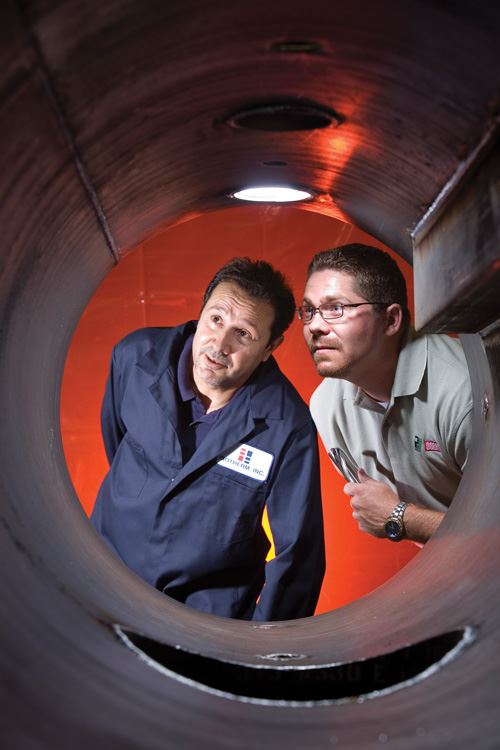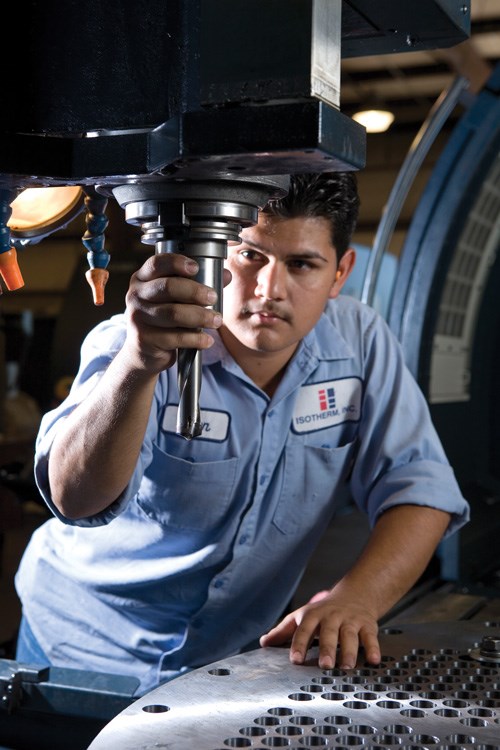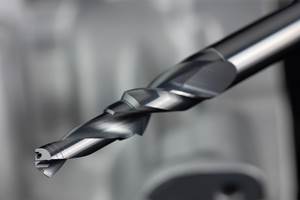Drilling Solutions Improve Tool Life, Cut Cycle Times
Interruptions due to worn or failed tools can be especially detrimental to productivity, especially on parts with lengthy cycle times. At a manufacturer of large commercial heat exchangers, many of which require drilling of hundreds of holes, the improved tool life of Precision Dormer’s Hydra and CDX-Inox drills led to significant cost and cycle time savings.
Share






Hwacheon Machinery America, Inc.
Featured Content
View More


Frequent tool failure can rapidly increase inventory costs, not to mention additional expenses from the resulting damaged parts or lengthy cycle times. This is especially true when the problem tool is used repeatedly for critical workpiece features. Arlington, Texas-based manufacturer Isotherm provides a case in point. The majority of the company’s products require extensive drilling in thick steel—an operation for which its tools were ill-suited. To alleviate wear and breakage problems, the company implemented the Hydra and CDX-Inox model drills from Precision Dormer. In addition to longer tool life and corresponding cost savings, these drills reduced cycle times from days to hours.
Isotherm provides large, commercial heat exchangers, pressure vessels and other industrial refrigeration components to petrochemical and marine users throughout the world. The company’s heat exchangers, for example, are used in enormous cooling systems used to maintain temperature in oil-gas separation towers and the giant refrigeration units on commercial fishing vessels. Founded in 1999 with three employees, the company has since expanded to 21 employees and fulfills between $4 and $5 million worth of orders each year.
Delivery dates for large-scale heat exchangers often extend months into the future. This is primarily because of the repetitive drilling tasks involved in their manufacture. The company’s model ZC-3624E, for example, consists of hundreds of tubes that are stretched between two flat, round end plates with corresponding holes for each tube. Producing a single unit requires drilling hundreds of these 25.4-mm-diameter holes in the thick, carbon steel end plates.
The company had used standard high speed steel (HSS) drills to machine the holes, but these tools couldn’t drill through the 76.2-mm-thick steel in one pass. Rather, using HSS drills for this application required pecking cycles—that is, moving the tool in and out of the workpiece at specified depths as many as 30 times per hole to avoid overheating. Additionally, the HSS drills tended to wear out after approximately 75 holes. Operators had to manually monitor the drills for breakage and switch them out when they failed, and manufacturing of a single end plate frequently required numerous tool changes. Productivity suffered significantly as a result. Even without tool failure, machining each end plate could require three 12-hour shifts. Furthermore, broken tools could damage the part surface, necessitating repair work before installation.
Al Faisal, Isotherm’s manufacturing supervisor, considered switching to 25.4-mm-diameter solid carbide drills. These tools last longer than HSS, but their cost was prohibitive. The company’s Precision Dormer representative, Wayne West, offered another solution: Dormer’s Hydra drill.
The Hydra consists of a hardened steel body with a replaceable, TiAlN-coated solid carbide head. Multiple head sizes offer a choice of drilling depths ranging to eight times the diameter with no compromise on structural integrity, the manufacturer says. Two head types are available, one for stainless steel and cast iron applications and one for other steels.
Rather than throwing away the entire steel body when a drill wears, users discard only the damaged head. Also, the multilayered coating and carbide construction enable the tool to drill continuously through the 76.2-mm end plates without pausing. In fact, the company can machine between 200 and 250 holes using a 1-inch-diameter (25.4-mm) head, and the drill tends to wear out rather than fail. This has enabled Isotherm to reduce average end plate manufacturing time from 3 days to 6 hours—less than a single work shift. The company has also realized cost savings because the tool’s replaceable heads cost less than previously used HSS drills.
Mr. West also recommended implementing Dormer’s CDX-Inox solid carbide drill for smaller applications in 316 stainless steel. While these tools don’t include replaceable heads, they do have a multilayered TiAlN coating and a thin margin that reduces contact with the hole surface. Combined with the through-coolant holes, this reduces cutting edge temperatures to prolong tool life and minimize work hardening, the manufacturer says. Also, like the Hydra, the CDX-Inox can drill completely through the end plates without pecking. This reduces the average production for 304.8-mm-diameter plates from 8 hours to less than 2 hours.
Since investing in the Dormer tools, Isotherm has pushed its production months ahead of schedule. "We’ve increased manufacturing productivity to the point where we don’t need to send anything to subcontractors, even when we take on high-volume orders," Mr. Faisal says. "Even considering the money we spent on new equipment to bring everything in-house, we save thousands of dollars on each heat exchanger we make."
Related Content
Tungaloy Drills, Milling Inserts Provide Enhanced Stability
Tungaloy has expanded its DrillForceMeister and TecMill lines with new drill bodies and milling inserts.
Read MoreKennametal's Expanded Tooling Portfolio Improves Performance
The company has launch eight new products that expand on and support existing platforms across multiple applications.
Read MoreEmuge-Franken's New Drill Geometry Optimizes Chipbreaking
PunchDrill features patent-pending geometry with a chipbreaker that produces short chips to control machining forces.
Read MoreMikron Tool's Drill Provides High Performance in Titanium
The new CrazyDrill Cool Titanium series is designed to provide controlled chip removal, high drilling speeds and long tool life.
Read MoreRead Next
Registration Now Open for the Precision Machining Technology Show (PMTS) 2025
The precision machining industry’s premier event returns to Cleveland, OH, April 1-3.
Read MoreBuilding Out a Foundation for Student Machinists
Autodesk and Haas have teamed up to produce an introductory course for students that covers the basics of CAD, CAM and CNC while providing them with a portfolio part.
Read More5 Rules of Thumb for Buying CNC Machine Tools
Use these tips to carefully plan your machine tool purchases and to avoid regretting your decision later.
Read More





































.png;maxWidth=300;quality=90)












